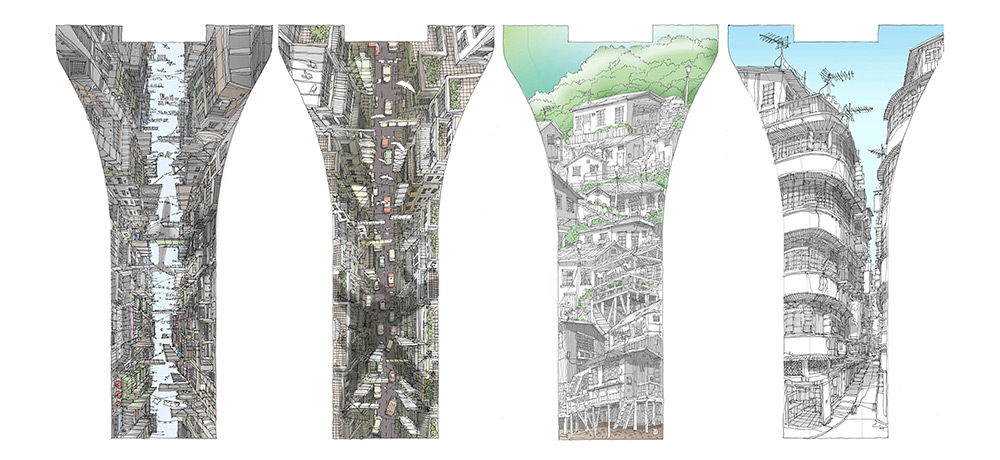
"City Dress-up Public Art Competition" was jointly organized by the Development Bureau, the Hong Kong Institute of Architects, the Hong Kong Institute of Landscape Architects, the Hong Kong Institute of Planners and the Hong Kong Institute of Urban Design as one of the events celebrating the 20th anniversary of the establishment of the Hong Kong Special Administrative Region for creating artworks across the territory to beautify city appearance. The competition invited teams from different professional institutes to encourage cross-disciplinary collaboration.
One stream of the competition, known as "Flyover Fantasy", aimed at creating mural paintings on some of the columns of Kwun Tong Bypass at the Fly the Flyover sites. The winning design "Urban Totem" features stories and characteristics of Kowloon East, including the old and new cityscape, industrial products in the past, new elements such as performing arts and green lifestyle. The murals were completed in August 2017 to complement Kwun Tong Promenade and became a new attraction of the district.
The murals of "Urban Totem" are divided into 4 zones and each with its own theme. At the Fly the Flyover (FF) site 01, the murals of squatter houses and "tong lau" in proximity to the former Kai Tak airport and the early generations of public housing represent the collective spatial memories of the older generations of Hong Kong people and the typical vernacular living environment of Kowloon East in the old days. The murals at FF02 feature sustainability and creativity as well as integration of nature and urban spaces. They echo with the eco-friendly concept of the site with green work spaces, urban farming and green lifestyle, etc. The murals at FF03 represent performing arts which is the key element of this site. Young performers are welcomed to express in all media, just like the vivid performance of musicians and dancers shown on the murals. The murals at FF04 feature the contrast between the new Kai Tak Cruise Terminal and the nearby ferry piers where workers used for commuting during Hong Kong’s vibrant industrial period. The other murals pay tribute to the factory workers and the iconic "Made in Hong Kong" products during that period.